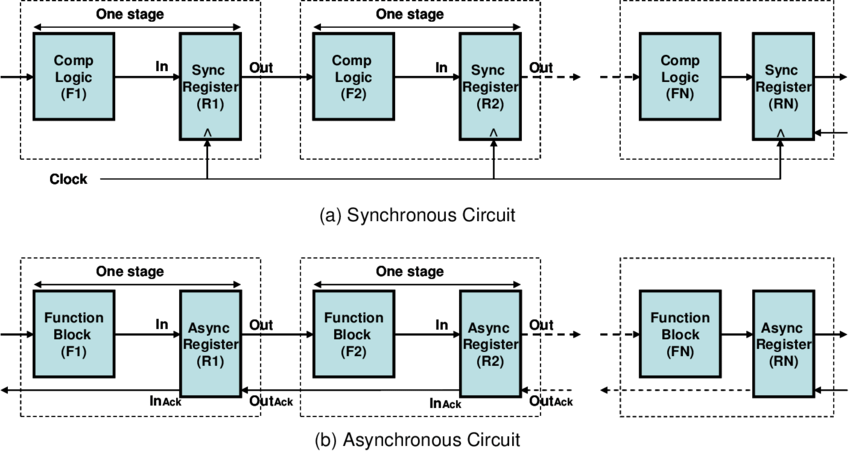What is the difference between synchronous and asynchronous sequential logic circuits?
What is the difference between synchronous and asynchronous sequential logic circuits?
mixos Answered question 22 June, 2023

Synchronous and asynchronous sequential logic circuits are two different types of digital circuits used in digital systems. Here’s an explanation of their differences:
1. Synchronous Sequential Logic Circuits:
- Synchronous circuits use a common clock signal to synchronize the operation of all the components within the circuit.
- The clock signal acts as a timing reference, and all state changes within the circuit occur at specific rising or falling edges of the clock.
- In synchronous circuits, the outputs are updated only during these clock edges, ensuring that all components within the circuit operate in a well-defined and coordinated manner.
- Flip-flops or registers are commonly used as memory elements in synchronous circuits to store and update data at each clock cycle.
- Synchronous circuits are typically easier to design, analyze, and debug, as the timing requirements are more predictable and easier to manage.
2. Asynchronous Sequential Logic Circuits:
- Asynchronous circuits do not rely on a common clock signal for synchronization. Instead, they use signals called handshakes, or request/acknowledge protocols, to coordinate the flow of data and control within the circuit.
- In asynchronous circuits, state changes can occur at any time, depending on the arrival of input signals or the completion of internal computations. The circuit responds to changes in input signals independently and asynchronously.
- Asynchronous circuits often use feedback loops, such as latches, to maintain their state until new input signals cause a change.
- Designing asynchronous circuits can be more challenging due to the complex timing analysis and potential hazards that may occur when signals change at different rates or overlap.
- Asynchronous circuits are commonly used in applications where speed and power efficiency are critical, as they can avoid the overhead of a global clock and enable more fine-grained control of timing.
In summary, synchronous sequential logic circuits use a common clock signal to synchronize and update the circuit’s components at specific clock edges, while asynchronous sequential logic circuits operate without a global clock and respond to input changes independently.
mixos Edited answer 22 June, 2023

